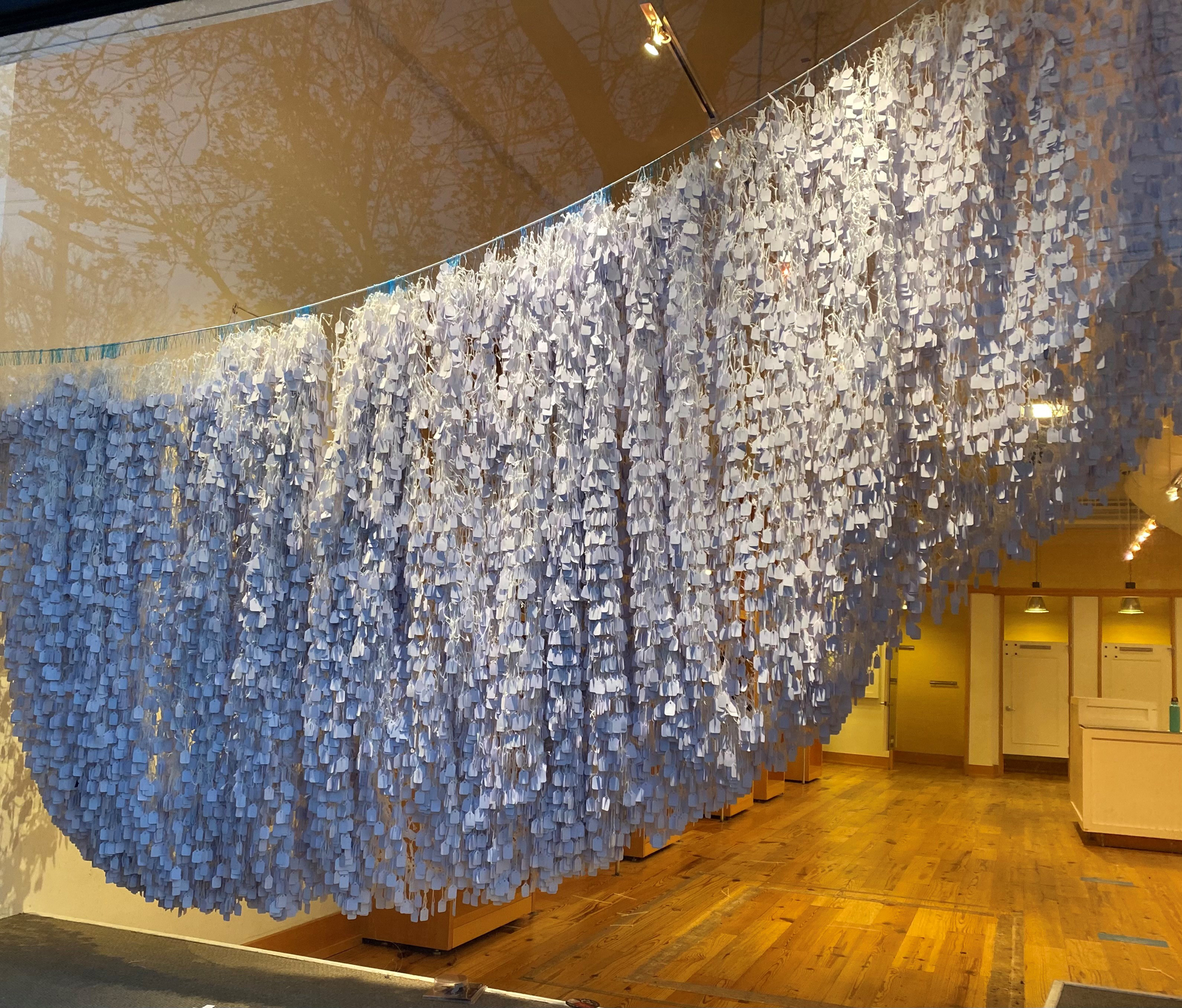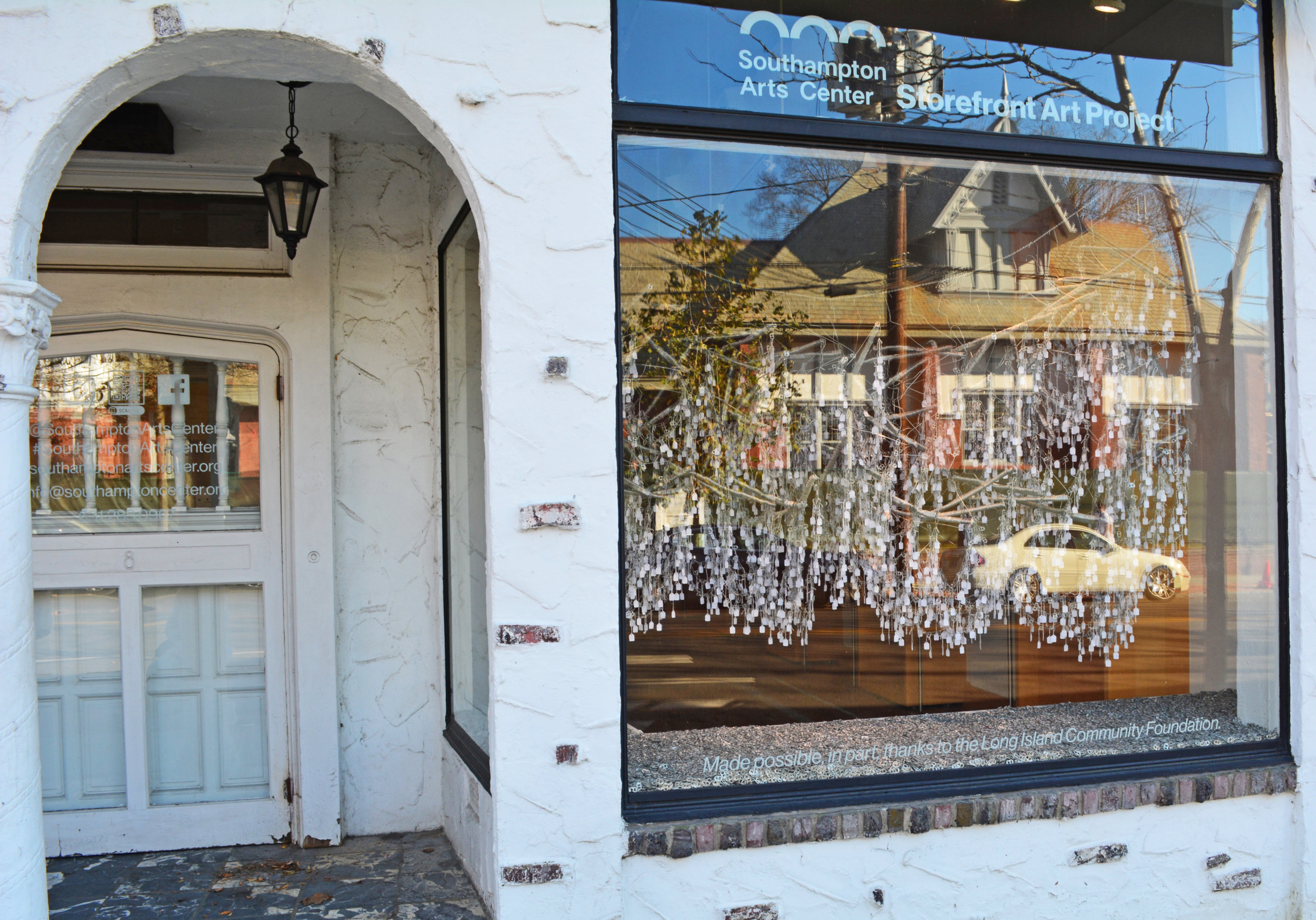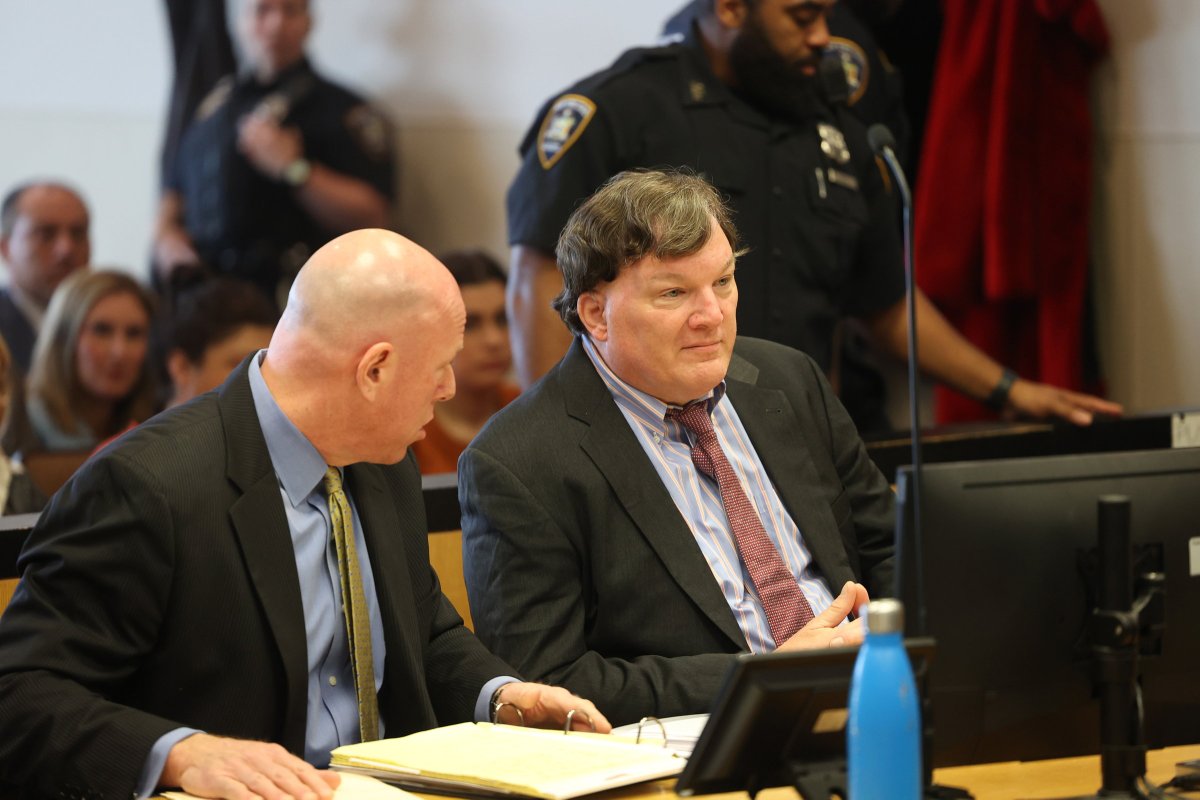Southampton Village Is Filling Storefront Vacancies with Art

Anyone walking down Jobs Lane in Southampton Village this season will likely stop and stare at a mesmerizing new art installation in the window of the former Chico’s—a display that, with thousands of price tags and hangers hung deliberately and methodically, challenges viewers to consider what things in life are truly “Priceless.” Southampton Arts Center’s exciting new off-premises Storefront Art Project, created by Northwest Woods artist Alice Hope, is quite a marvel in its own right, but it’s just one small step in a swift change to Southampton Village law that may someday spread across the East End.
In response to the village’s high vacancy rates in the offseason of 2019, Southampton Village Mayor Jesse Warren and the Board of Trustees rolled out Local Law No. 6 on July 21, 2020, amending village code to now require vacant storefronts in the village and highway business districts to put up window displays that are more visually interesting than basic curtains and plain paper. In most cases, window displays must be approved by the Village Administrator, but if the landlord works on an art installation with the Southampton Artists Association (SAA) or Southampton Arts Center (SAC), the display is considered pre-approved.
“When I looked around last year when I took office, we had more vacant storefronts than we had a decade earlier right after the Great Recession,” Mayor Warren recalls. “Any time you have a vacant storefront, it does not help any of the entrepreneurs at the adjacent stores, so we’re basically turning what is a detractor to a business into an opportunity or a positive, because people are now going to want to check out those art installations…. This was to, at least in the interim, figure out a way to make our downtown more vibrant and more interesting and incorporate an art component.”
Southampton Village was not the first East End municipality to enact such legislation, with a 2012 East Hampton Village law requiring the installation of a screen with graphics or posters in vacant storefronts. “There’s definitely precedent for it. We just took it a step further by collaborating with the arts center,” Warren says.
Long before the legislation, SAC Artistic Director Amy Kirwin had wanted to do window art installations—”winstallations,” as she called them—but the idea didn’t pan out until now. For the debut display, “Priceless,” she chose a collection of Alice Hope’s in-progress works that fit perfectly with the theme of art in a retail space, including accordioned chromed coat hangers, paper price tags and strung can tabs. “It was redefined and reenvisioned for this installation,” Kirwin says of the finished display. The installation will remain on view for up to six months or until the Chico’s space finds a new tenant.
“It’s definitely bringing attention to that window, which is great for the landlord and the property manager,” Kirwin says. “The hope is that people will learn about it and come to walk through the village and look at the windows, then patronize then shops, go to the restaurants and, hopefully, stay overnight at a hotel.”

In addition to Hope’s “Priceless” installation in the old Chico’s window, the display features a QR code enabling viewers to learn more about the artist and a “For Rent” sign from Morley Property Management, Inc. the first of its kind to jump onboard the Southampton law. “I got out in front of it because the village has been talking about…maybe taxing or fining landlords that had plain vacant storefronts, so I said, ‘What a great idea! Let’s get some artwork!'” company President Morley A. Quatroche, Jr. says, adding that while he’s hopeful that the art will allow him to lease the space more quickly, some property owners have voiced concern that the opposite might be true. “There are landlords who are just adamant against anything that blocks a potential tenant from seeing their vacant space from the street.”
This reasonable concern led the Southampton Village Board of Trustees to work a clause into the final law ensuring that the aggregate area of a display must not exceed 25% of the window, allowing potential tenants plenty of space to see inside. “What we do is not meant to hide the interior of the building but draw attention to the installation…so if someone is looking to rent a shop, they can still see into the shop,” Kirwin confirms. “Nothing will be blocking the view into the shop, because we also hope the shop will be rented!”
Should landlords choose not the comply with the legislation, they may incur fines of $1,000 to $2,500 for each offense, with prolonged noncompliance considered a distinct offense. “This law is more than a strong suggestion, but our goal is not to fine anybody, it’s just to make sure we get compliance,” Warren notes.
The law, while still young, is already changing the way Southampton property owners think about their lease agreements. “What I plan to do in the future is build those kinds of clauses into my lease where I require a tenant to, if they’re going to be vacant or closed for several months, to work with the SAC to make their windows a little better than just the white paper up,” Quatroche adds, explaining that unless it’s written in the contract, he can’t force a tenant to install a proper window display when they close for the offseason.
At present, the former Chico’s is the only storefront to feature an art installation by SAC or the SAA, with talks of a second installation at the shuttered J. Crew on hold while the Hampton Classic’s KAVAL & Friends Gift Emporium uses the space through the end of the year. Despite the Storefront Art Project’s slow start—which can actually be considered a good thing since more stores have been staying open into the fall and winter—hopes are high that as businesses inevitably take a winter break after the new year, storefront art will flourish throughout the village, and maybe even throughout the East End. “I think there’s a good chance that this could inspire the other villages to incorporate this idea, whether they make it legislation or not,” Kirwin says, noting the numerous arts institutions in East Hampton and Sag Harbor make the villages excellent candidates for a similar initiative. “It really benefits everybody! A shop window on a main thoroughfare is such prime real estate that to waste it is a shame.”
While a similar law could potentially work in other villages, Warren notes that Sag Harbor and East Hampton have lower vacancy rates due to quick storefront turnarounds, so the need for such legislation isn’t as vital. “This might not work in a different village, might not work in another city, but we know it works in Southampton Village,” he says. “So that’s the beauty of local government in action.”



